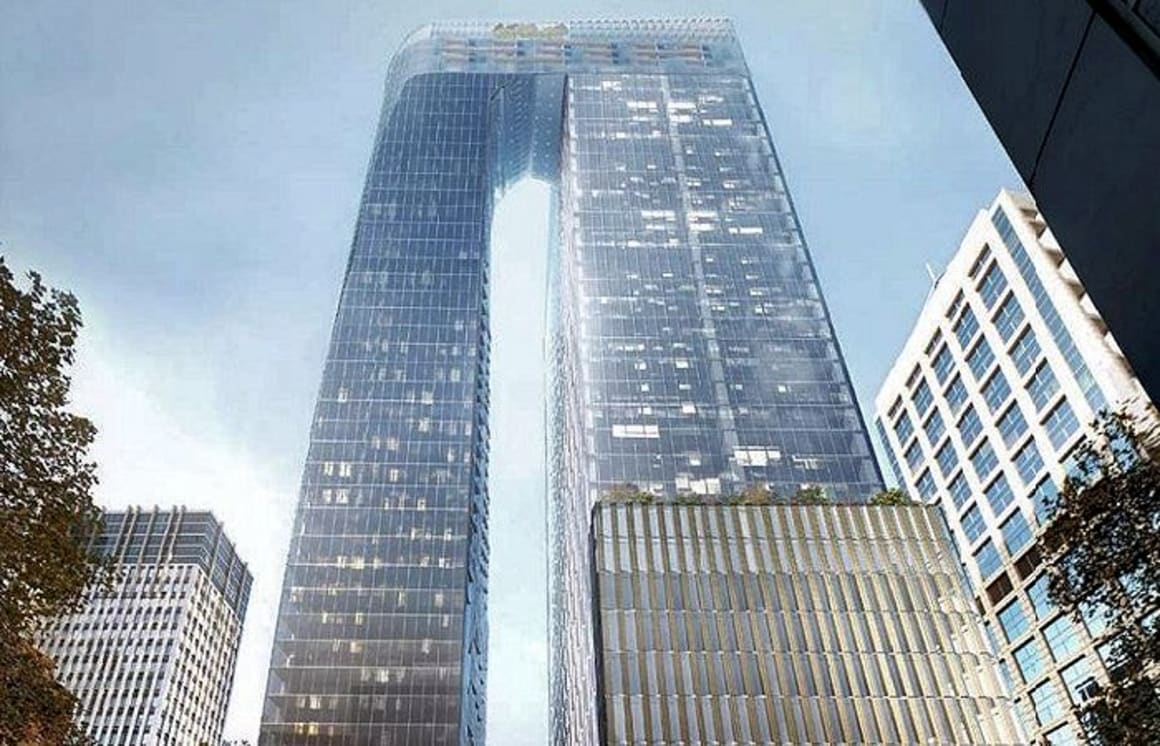No pants and no park: where to now for 447 Collins Street?

Upholding a long standing political tradition of announcing newsworthy items just prior to extended break periods, news surfaced last Thursday evening of Planning Minister Richard Wynne's decision to reject Cbus Property's proposed skyscraper at 447 Collins Street. This is the second such refusal for the developer on what is a marquee development site.
Referred to as the 'Pantscraper' in Fairfax publications due to the unique shape of the now defunct proposal, Minister Wynne's refusal of the project is one of boldness or foolishness… depending upon one's perspective on the matter of course!
There are valid arguments for both approval and rejection of the building, which if approved would have most definitely given Melbourne's skyline a unique focal point from various angles. The matter has been and continues to be hotly debated on Urban.com.au's forum, a petition is circulating in the vain attempt to save the design; it's altogether very emotive topic for what is generally a cut and dry sector.
So was Minister Wynne's disapproval a wise decision?
I lean towards no, based upon how vocal Lord Major Robert Doyle has been in the days since the decision was made public. For so long the 'canary down the mine shaft' on all major inner city development proposals, Melbourne City Council are always willing to sing a song of discontent when it came to assessing the worth of any given planning application.
That they were fully behind this particular proposal said enough in itself.
Now invariably comes the compromise design that will try to conjure the best possible outcome for all involved. But why should it?
From Cbus Property's perspective the entire exercise has been an expensive one thus far, particularly in terms of securing the site and funding the subsequent onsite demolition which was overseen by Probuild. Any revised development scheme would require that initial outlays be recouped, along with any expected return on investment.
Can this be achieved with the notional parameters now set over the site? 120 metres being the approximate height at which any towers could reach prior to stumbling into overshadowing issues.
Thus far it has been a case of Cbus Property seeking dispensation for height in return for maintaining 2,000sqm of open space fronting Collins Street; an excessively rare chance to provide Melbourne's premier thoroughfare with a new park.
No height dispensation should essentially equal no 2,000sqm park fronting Collins Street; at least that would be my stance if I were in the shoes of Cbus Property - fool me once, fool me twice… or something along those lines.
In order to reap what they expect from the site I wouldn't be surprised if the development takes on a more typical design outcome, say similar to Cbus Property's past development at Grand Central (181 William Street). While it wasn't architecturally stunning it got the job done, and that may just need to do for a revised 447 Collins Street… unfortunately.
So as it stands the 'Pantscraper' looks to be a very rare opportunity to deliver a unique built form and unique urban realm that will go unfulfilled.
It will be fascinating to see if any compromise can be reached from this point on; no Collins Street park would be an exceptionally poor outcome if it were to go that way. Lord Major Robert Doyle described 447 Collins Street's rejection as a terrible result for the city and I tend to agree.